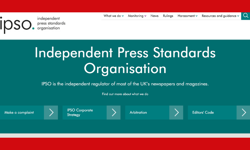Most people in the industry, including those in a position to influence such things, agree that the circulation function has suffered from considerable underinvestment over the years, but there are signs that this is beginning to change. The reason for this is the realisation that the circulation world of tomorrow will place a greater focus on direct marketing (via reader retention strategies and the accumulation and exploitation of customer insight) and this will require system development and investment in IT and direct marketing skills.
Focus on the individual
For many years, publishers have been kept apart from their readers by a multi layered supply chain. Knowing how many copies were sold, not who they were sold to, was sufficient and systems reflected that need – the wholesaler or retail outlet was recorded on the system, not the reader. But, says PCS’s Jerry Hall, ‘the biggest change over the last ten years, has concerned the relationship between the publisher and the end user – the reader,’ and this trend is likely to accelerate. Publishers are looking to build direct relationships with their readers, as a means of securing advertising revenue and of opening up other direct sales opportunities.
With low cover price and high distribution overheads, direct delivery works on very tight margins. The focus, therefore, has been on process automation, to make distributor and round management as efficient a process as possible. Interestingly, it seems that there has been only limited take-up, to date, of other tools that would reduce the administrative burden and cost of direct delivery. The principle of self service (enabling direct delivered customers to manage their account online) has barely got off the ground; sexy mapping tools for round creation and management continue to wow circulation teams at demos but still sell in small numbers, despite a drop in price, and the use of SMS / email to communicate with both customers and distributors is being used only in a minority of newspaper centres. There are exceptions; Cambridge Newspapers’ David Galletly says that they have recently added email addresses and mobile phone numbers to their retailers and home delivered records, and they will be looking to contact retailers via SMS to notify them of late delivery or product changes. They also plan to start emailing home delivered customers their monthly invoice. And South Wales Argus’ Andrew Kinsey plans to start sending emails to his direct delivered customers, with the message tailored to their lifestyle and interests, alerting them of upcoming features and supplements.
The marketing side of direct delivery has lead to an investment in canvassing systems at some centres. Progressive publishers have taken on board the need for clean, screened data sets, deduped against existing customer lists, the need to collect and hold readership information on the prospect and the tailoring of the offer, based on knowledge of that individual. For telephone canvassing, system suppliers like CCB provide scripting tools for real time marketing, whilst for door to door canvassing, there is increasing, though not yet widespread, use of PDAs to collect data. A key thing, says CCB’s Bill Burey, is ‘to collect the data and use it as quickly as possible.’ Too many, clip board based canvassing campaigns run out of steam, the response sheets held up in interminable data input backlogs. The use of PDA’s, perhaps with wireless link to the office for regular downloads, or indeed barcode and scanner technology, can ensure that this vital information is collected, loaded and acted upon while it is still fresh.
Product layering
It is not only the direct distribution of the traditional newspaper that is placing the individual to the fore. The use of product layering and multi-media means that there are now multiple points of contact between a publisher and its ‘readers’. One individual might be a home delivered recipient of the newspaper, a registered user of the online business pages, a paid subscriber to the monthly county magazine, a member of the travel club and a proven responder to reader offers. The chances are that this, extremely valuable, person would currently be held in a number of separate, unconnected databases (or silos). If he were, God forbid, to die on us, the chances of his records being updated in each silo simultaneously are next to nil. This lack of communication between databases means that publishers have little idea of his total worth and work with a very partial picture of his activities, thereby limiting what they can market to him. The reason for this is that, perhaps inevitably, new platforms and product have popped up here and there, often driven by small project teams intent on getting to market as quickly as possible. There was little or no liaison with newspaper sales teams, because they weren’t selling newspapers. The fact that they were selling to the same customers was not dwelt on for too long. Creating a market came first, sorting out the back office stuff came second. To be fair, it would be hard to envisage it being done any other way, but the fact is that publishers now need to find a way of viewing their customers in the round.
There are a number of ways this can be done, some easier than others. You can go down the customer database road, whereby all customers are brought together in a single database that is populated and updated by a series of regular data feeds. Alternatively you can go down the SOA (service orientated architecture) route to improve the communications between different databases. According to Atex’s Nick Cutts, adopting an SOA approach means that ‘ultimate system convergence can be achieved in manageable phases, without the need for so called ‘big bang’ or ‘rip and replace’ system upgrades.’
A step in the right direction might be to expand the scope of the newspaper sales system, perhaps renaming it the ‘Content User Management System’, which would be the transactional database for all transactions (not just newspaper sales) between a publisher and its content users.
A word of warning. Resist the temptation to try and build the all singing, all dancing super system. Fernhall’s Robert Marson cites the example of recent government IT projects which were specified to the nth degree, but which ended up being quite unworkable. Such projects are vulnerable, says Press Ahead’s Alex Nicholson, to infighting, loss of focus and budget and deadline overruns. All singing, all dancing is nice in theory, but you can still get where you need to be without it, even if, says the FT’s Martin Ashford, the ‘seamless customer interface does rely on some rather complex back end interfaces and workarounds.’
Newstrade developments
Lest we forget, the traditional newstrade still has life in it yet. Here, too, the web has the potential to facilitate communications, with retailers being able to access and manage their account online. Sure, some won’t want to, but some will and the balance, between those wanting to self serve and those not, will shift over time. In terms of system developments, most of the focus is on copy management and predictive supply. Most third party systems include predictive supply modules, and there are specialist providers too. With some notable exceptions, predictive supply tools are being under-utilised within newspapers centres, yet are one area in which significant cost benefits can be achieved with relatively little effort. Publishers need to consider how many variables they wish to factor into their models, over and above the supply and returns figures for each outlet. We all know that a particularly grisly murder or a United home win, to say nothing of the British weather, all affect sales, but the question is how to apply this information in a usable way. At what point does the cost of collecting the information outweigh its usefulness? At the FT, Martin Ashford has installed a new forecasting system and says ‘we can use it to review the job done by our wholesalers, flag up exceptions and generally keep on the back of wholesalers.’
So, in circulation and marketing terms, the trend is towards managing a direct relationship with the reader; however there appears to be widespread under-utilisation of the tools already at our disposal, be it mapping, PDAs, predictive supply or even the use of SMS / email to cut down on postal costs. As Newsquest’s Howard Scott put it, ‘newspaper sales systems house a wealth of customer data, but all too often it is under-used or simply not used at all. I wonder how many publishers still communicate with their direct delivered customers as ‘Dear Reader’?’
Vision
‘To what extent,’ asks CCB’s Tony Coad ‘are we in danger of automating the world of yesterday and taking our eye of the world of tomorrow?’ If you accept that newspapers, in some shape or form, are going to be with us for some time to come, then improving the efficiency of their distribution, whether direct or through the trade is worth doing. The challenge, though, for senior management is to be aware that newspaper sales and marketing is but one part of a much bigger whole, and to obsess too much on traditional methods is to lose sight of the bigger picture. As MGB Systems’ Mark Goldsmith says, ‘the printed product will almost certainly become a by-product of the digital product; the challenge is how newspapers harness the digital readership.’ As Archant’s Philip Preston puts it, ‘it’s no longer just about ABC figures – combining readers, listeners and viewers is becoming the new currency and systems will need to adapt to make sense of that.’
Newspapers have to be seen as part of an integrated offering, and the customer should be the one to decide which format suits them. If that happens to be an e-edition of the newspaper then so be it. The challenge isn’t to push one format over another, but to offer a choice and to then explain to the media buyer why the reader made the choice they made.
Are IT systems helping or hindering publishers to meet the complex challenges they face? According to Press Ahead’s Russell Borthwick, ‘system limitations, complexities and costs can be held up by some publishers as an excuse for inaction. Generally speaking, available technologies are up to the task. The challenges for publishers are to establish a vision of how they want to do business with consumers in the future, create a case for medium term commercial ROI and work backwards from that end point to implement an appropriate, achievable and staged implementation plan, keeping in mind at all times what it is that they are aiming for. The key issues are commitment, mindset and preparedness to invest in the future, not the systems themselves.’
IT systems have changed out of all recognition in the last ten years, with hugely increased capacity meaning that virtually limitless amounts of data can be stored. Broadband adoption is continuing apace and, with it, the potential for publishers to streamline their distribution operations as well as offer new product.
Without wishing to demonise Google and the digital cohorts, they have a very clear vision of the future and they are driving relentlessly towards it. Navel gazing is no defence. The question is, says Tony Coad, ‘are we seeing software in an integrated way? Do we have a vision?’ Vision is needed to turn the increased system power into commercial success. System suppliers and IT staff are waiting for your lead.
| Thank you to the many publishers who provided feedback and, also, to the following for their great help with this article: Russell Borthwick & Alex Nicholson (Press Ahead) * Tony Coad & Bill Burey (CCB) * Nick Cutts (Atex) * Mark Goldsmith (MGB Systems) * Jerry Hall and team (Press Computer Systems) * Robert Marson (Fernhall) * Alex Nicholson. |










